Search Results

Chancez
Hey, my name is Chancez (ironically, I was blessed with many chances last year). I became a part of The Leukemia & Lymphoma Society (LLS) community last year and was provided financial support. I was also presented with love, care, and daily reminders of all the support that was available to me to get me through such a rough period in my life. A friend of mine suggested that I share my story to help others in our community, especially young adults who are in the same predicament I was once in.
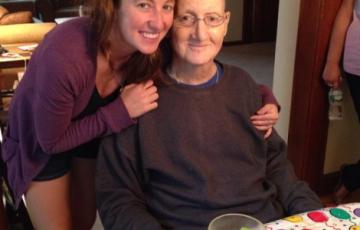
Bob
It has been 69 days since I sat in the hospital bed next to my father as he passed away from the horrors only a disease like leukemia could bring. It has been 69 days since my father passed away and "Into the Mystic" still plays on repeat in my head as it re-played over and over again in that hospital room as we urged him to go, that it was okay. For those who tell me that only time will make this better, 69 days still feels like yesterday, 69 days and I am still bargaining, pleading to see my dad on the couch when I open my front door.
Berenise
On October 22, 2013, as a senior in college, I was spontaneously diagnosed with acute myeloid leukemia (AML). I was immediately admitted into the hospital and began chemotherapy. The doctors basically said, "good luck”, as I received the routine treatment that has a survival rate of 25%. My life was flipped upside down in a matter of days. I went from planning what I was going to do after college, to deciding if I would want people at my funeral to wear black or be colorful. I didn't know whether to cry, scream, or be angry.

Cindy
Our church choir had put on a big Easter program in 2002, lots of practices and multiple performances. After the fact, several, including me, came down with an upper respiratory infection. All my friends got better, but I didn’t. Then I started having low energy to the point that I couldn’t do my daily workouts. Next came the appearance of big, ugly bruises on my legs. At that point, I thought I was anemic. When I called to get a doctor’s appointment, the only opening was with his nurse practitioner.
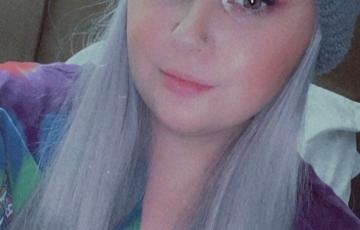
Kristy
On May 24, 2020, at 23 years old, I started getting dizzy out of nowhere. I thought maybe I needed to eat and sleep better, but it got worse. I went to the ER, and they said I was anemic and sent me home. I bought a bunch of food that’s supposed to help anemia, but I kept getting worse, to the point where I couldn’t get up to eat. I would throw up and get dizzy and almost pass out. I lost color, and my lips turned pale. I lost weight, and I pretty much looked like a zombie. Then one day I couldn’t get up, and I sat in the same spot for hours.
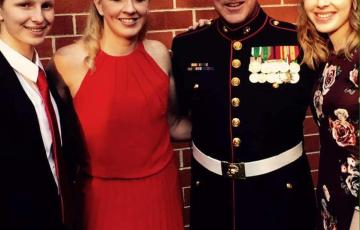
Yarnall Family
To be of service to others comes naturally to the Yarnalls. Bob is a 25-year Marine Corps veteran and a teacher. Kim is a chiropractor for over 22 years.
Michael
I’m a 12-year survivor of acute myeloid leukemia (AML). I was diagnosed on Sunday, October 4, 2009.
My oncologist was Dr. Ian Flinn. The first 24 hours following my diagnosis were very harrowing. I was ground transported from Murfreesboro to Sarah Cannon Cancer Center in Nashville where they had a gurney awaiting me curbside. A nurse by the name of Regina stayed with me for almost the entire duration of my first eight hours.

Siri
Siri is the most resilient, loving, inspiring, authentic, and brilliant woman I have ever met. She lives each day to the fullest and is filled with gratitude for all life and for every breath she takes. Her joy, light, and exuberance illuminate all around her. She is a two-time World Champion Triathlete, a top 10 global speaker, a best-selling author, a Tony Robbins keynote speaker at his worldwide events, saves horses from abuse, and so much more. Her life's mission is to help others. Here's a very condensed version of her story.
Kali’a
Kali’a, at just four months old, was diagnosed with B-cell acute lymphoblastic leukemia (ALL), a high-risk condition requiring a bone marrow transplant. What began as a routine four-month check-up quickly turned into our worst nightmare. Despite having plans for a day at Disneyland, a decision to keep the appointment proved fateful as the doctor discovered her enlarged spleen. Tests followed, but we managed to enjoy a memorable day at Disneyland where Kali’a's joy and smiles were infectious. The next day, a life-altering call shattered our world.
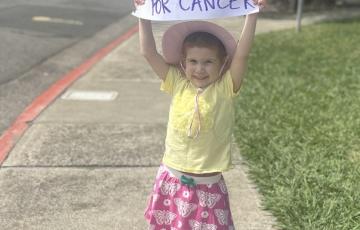
Hadley
My granddaughter Hadley was three years old when she suddenly started limping in pain and was unable to bear weight on her right leg. Forty-eight hours and three medical appointments later, her bloodwork showed acute lymphocytic leukemia (ALL). It was a nightmare that came out of nowhere.
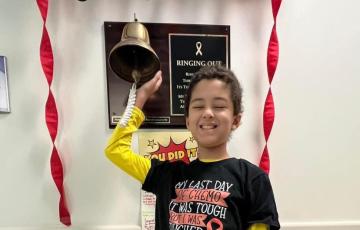
Loxley
In early September of 2020, my son started to complain of back pain. I took him to the pediatrician, where he was assessed and a multiview x-ray was ordered. It was normal. I agreed to keep a log of his back pain complaints.
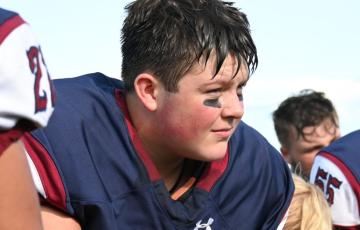
Joshua
Joshua was a regular 11-year-old. He played multiple sports, was learning to play the flute in the school band, and enjoyed having fun with his friends. After a few weeks of a nagging sore throat and enlarged tonsils, we took Josh to see his primary care physician (PCP). They ran some tests and sent him home. No big deal, just a routine trip to the doctor’s office. Josh's PCP called the next day at 6:00 p.m. . . . on a Saturday. She said that she was worried about some of Josh's blood test results and recommended we go to an urgent care or emergency room for further checks.
Nora
Nora was diagnosed with acute lymphoblastic leukemia (ALL) on August 20, 2018. This is the day our lives were turned upside down and forever changed. Nora was about three weeks away from her second birthday, and we were in utter shock that she would now be fighting an unfathomable battle. After all, this was Nora, our go-hard, go-fast, ray of sunshine. Never did we imagine anything could get her down. But yet, here we were.
Isabel
I never expected to have my whole adult life colored by cancer. In the fall of my freshman year of college, I was diagnosed with chronic myelogenous leukemia (CML). I was freshly 18 and didn’t have much of a vision for my future, but what vision I had definitely didn’t include chronic leukemia. It was a difficult and shocking time, trying to make new college friends while in and out of the hospital, navigating emotional terrain most of my fellow students were very far away from.Today I am 30, and a CML survivor of over 12 years.
Follow-Up Care
Follow-up care is important with both aggressive and indolent forms of NHL because if the disease recurs, curative options are still available for many people. Follow-up care needs to be individualized and should be based on several factors, including how the disease initially manifested. Patients who are in remission should continue to be monitored by clinical assessment as determined by their doctor. In the past, computed tomography (CT) scans or other diagnostic imaging were done routinely in an attempt to detect relapse.
Relapsed and Refractory
Most patients with classical HL are cured by their initial (first-line) treatment. However, in a significant percentage of patients—especially those with advanced stage HL—the disease relapses or is refractory.
- Relapse means the disease comes back after a remission following treatment.
- Refractory means the disease has not responded to treatment.
For these patients, HL is still potentially curable.
Side Effects
The main goal of treatment for myeloma is to get rid of myeloma cells. The term side effect is used to describe how treatment affects healthy cells. Patients react to treatments in different ways. Sometimes there are very mild side effects. Other side effects may be serious and last a long time.
Myeloma patients should talk with their doctors about side effects before they begin any type of treatment. There are drugs and other therapies can prevent or manage many side effects.
Prognostic Factors
Prognosis is the likely outcome of a disease along with the chance of recovery or recurrence. Hodgkin lymphoma (HL) cases are generally classified into the three subgroups described below.
Blood Transfusion
Blood transfusion using cells donated by healthy volunteers can help replace red cells, platelets and other blood components. Some people with leukemia, lymphoma, myeloma and other blood diseases or disorders such as hereditary anemias and aplastic anemia need periodic blood transfusions for several reasons:
NHL Subtypes
More than 60 specific NHL subtypes have been identified and assigned names by the World Health Organization (WHO). NHL subtypes are categorized by the characteristics of the lymphoma cells, including their appearance, the presence of proteins on the surface of the cells and their genetic features. It's important to know your subtype since it plays a large part in determining the type of treatment you'll receive. A hematopathologist, a doctor who specializes in the diagnosis of blood disorders and blood cancers, should review your biopsy specimens.
Coping With Cancer
When someone is diagnosed with cancer, everyone in his or her family is affected. This holds especially true when a child has cancer. Different families have different ways of coping, but there are some sound strategies that anyone can employ. For useful tools and tips that may help, see the following pages:
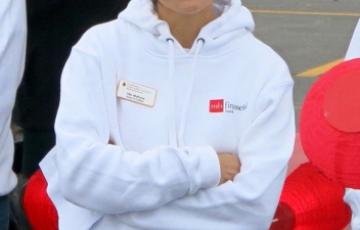
Clio
I lost my mom to acute lymphoblastic leukemia (ALL) in 2003. Her battle was short, just three months, which left me in shock and feeling very angry. My mom had always instilled in me the value of working hard to accomplish goals and I knew she wouldn’t want me wasting energy being angry. In late 2004, I decided to find a way to channel the anger into something productive, and just weeks later I came across a Team In Training (TNT) brochure. I started running half marathons with TNT and I’ve since completed about a dozen.
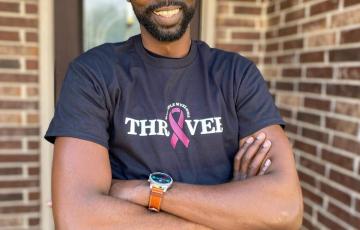
Damion
In 2020, at the age of 36, I was diagnosed with multiple myeloma (MM). To say this was out of left field would be an understatement. Historically, MM has been recognized as a blood cancer that impacts older patients. That research may be changing. Also, MM disproportionally affects African Americans. At the time of my diagnosis, I was a pretty healthy guy. I tried to eat right and even played in two basketball leagues each week. When I went to the doctor with stomach issues, I wasn't expecting to leave with a cancer diagnosis.
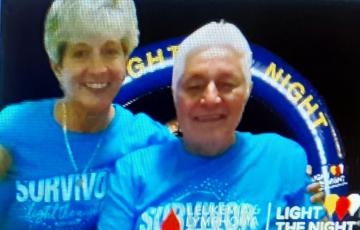
Diane
My journey with The Leukemia and Lymphoma Society (LLS) started in 2015 when my spouse was diagnosed with orbital lymphoma. I have been working in the oncology field for the past 20 years. Hearing the words my spouse has cancer was scary. After meeting with the oncologist he did not need treatments watch and wait approach was great news. Proudly he got to the 5 year benchmark and he is well. Then 2019 I started to have all abdominal issues. Pain, pressure in abdomen as well in my back. We did multiple scans all negative.
Dominick
My grandson, Dominick, was diagnosed with high risk pre b cell acute lymphoblastic leukemia (ALL) in November 2014. He was 2 3/4 years old and it was only 8 months after his dad unexpectedly passed away. Obviously this was a new shock for his mom, Danielle and his family. His sister Gianna, who just turned 5, still hadn't got over the loss of her dad and now had to deal with her brother's illness. Dominick had severe bruising and was diagnosed by his pediatrician.